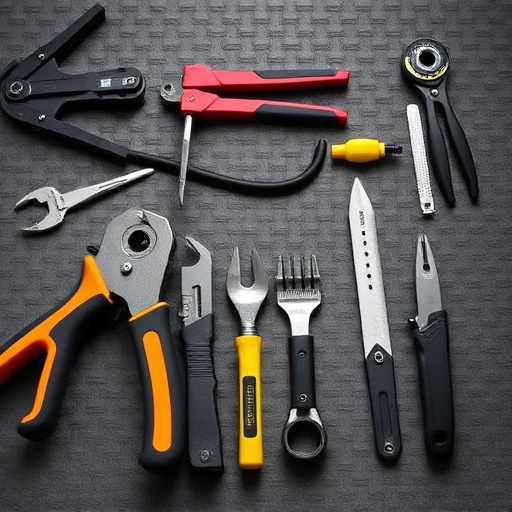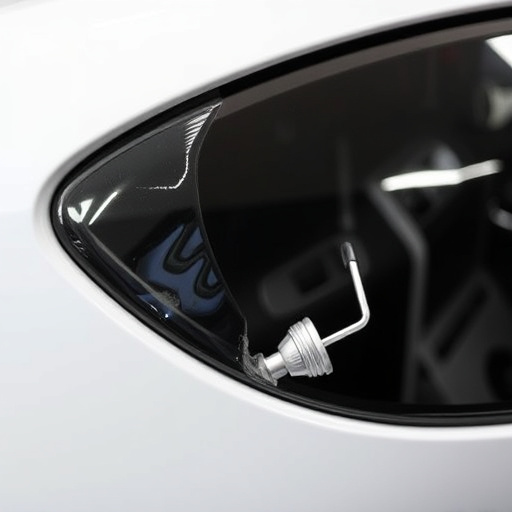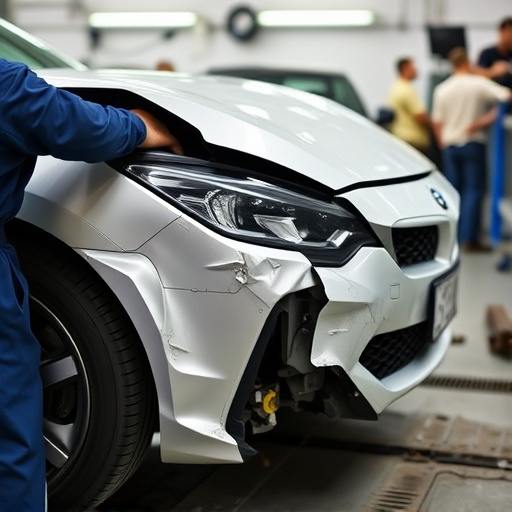Unleashing Precision: Advanced Welding Equipment Features

Advanced welding equipment leverages precision technology and automation to transform industries lik…….
In the realm of manufacturing, construction, and engineering, welding has long been a fundamental process, binding materials together with precision and strength. However, the evolution of industry demands more than traditional methods can offer. This is where advanced welding equipment steps into the spotlight, transforming the way we join metals and other materials. This comprehensive article aims to explore the intricate world of advanced welding technologies, their global impact, economic implications, technological leaps, regulatory landscape, and the challenges they address. By delving into these aspects, we uncover the significance of this equipment in shaping industries worldwide.
Definition: Advanced welding equipment refers to a sophisticated suite of tools and machines designed to enhance the precision, efficiency, and versatility of the welding process. It encompasses a wide range of technologies, from automated systems to robotic arms, each tailored to meet specific industrial needs.
Core Components:
Welding Machines: These are the workhorses of advanced welding systems, employing various techniques like arc, laser, or gas welding. Modern machines often feature computer numerical control (CNC) capabilities for automated precision.
Power Sources: Welding requires a controlled and powerful energy source. Advanced equipment utilizes modern power supplies, such as inverters, which optimize energy transfer, reduce heat input, and improve overall process efficiency.
Consumables and Accessories: This includes welding rods, wires, gases, and other materials essential for the welding arc. Specialized consumables cater to specific alloy types and joining requirements.
Robotic Systems: One of the most transformative aspects is the integration of robotics. Industrial robots with advanced welding attachments can perform complex tasks, ensuring consistency and freeing human workers from repetitive duties.
Historical Context:
The journey towards advanced welding equipment traces back to the 19th century when manual welding techniques emerged. The development of arc welding in the early 20th century revolutionized the industry, making it faster and safer. Fast forward to the digital age, and we see the incorporation of automation, robotics, and computer-aided design (CAD) software, elevating welding to new heights of precision and efficiency.
The influence of advanced welding equipment is a global phenomenon, impacting industries across continents. Here’s a glimpse into its international reach:
North America: Known for its advanced manufacturing base, the United States leads in adopting robotic welding technologies, particularly in automotive and aerospace sectors. Companies like Ford and Boeing have heavily invested in automated welding systems to enhance productivity.
Europe: With a strong focus on sustainability and precision engineering, European countries embrace advanced welding for lightweight construction in automotive and aerospace industries. Germany, in particular, is renowned for its high-precision laser welding applications.
Asia Pacific: This region, driven by rapid industrialization, sees extensive use of advanced welding equipment in the manufacturing hubs of China, Japan, and South Korea. These countries are at the forefront of robot integration, with companies like Fanuc and Yaskawa leading the way.
Emerging Markets: Countries in Africa and Latin America are also witnessing an upsurge in advanced welding adoption, driven by infrastructure development projects and local manufacturing initiatives.
Trends Shaping the Future:
Industrial Automation: The trend towards complete factory automation is driving demand for sophisticated welding equipment, especially robotic systems that can work alongside other automated machinery.
Lightweighting: A focus on reducing vehicle weight in the automotive industry has led to an increase in advanced welding techniques for joining lighter materials like aluminum and high-strength steel alloys.
Additive Manufacturing: 3D printing, or additive manufacturing, combines with welding in hybrid processes, offering new possibilities for complex geometries and rapid prototyping.
Smart Factories: The concept of smart factories, where equipment communicates and coordinates via the Internet of Things (IoT), will further enhance the efficiency of advanced welding operations.
The economic landscape surrounding advanced welding equipment is dynamic and multifaceted.
Market Size and Growth:
Investment Patterns:
Economic Impact:
The field of advanced welding equipment is characterized by a continuous stream of technological breakthroughs that propel industry forward. Here are some notable advancements:
Laser Welding: This technique utilizes a highly concentrated beam of light to join materials with remarkable precision and speed. It is ideal for intricate designs and thin sheets, finding applications in aerospace, electronics, and medical device manufacturing.
Automated Arc Welding: Modern arc welding machines incorporate advanced control systems, allowing for automated processes that ensure consistent quality and reduce human error. These systems can handle complex geometries and diverse joint configurations.
Robotic Process Automation (RPA): RPA integrates robots into various industrial processes, including welding, to perform tasks with speed, accuracy, and consistency. Robots can be reprogrammed for different jobs, making them highly versatile.
Additive Welding: Additive manufacturing techniques, when combined with welding, enable the creation of complex 3D structures. This is particularly useful in industries like aerospace, where lightweight components are crucial.
Digital Twin Technology: The concept of a digital twin, a virtual representation of a physical asset, enhances welding processes. Digital twins allow for simulation, optimization, and predictive maintenance, ensuring efficient and reliable welding operations.
The development and deployment of advanced welding equipment are influenced by various policies and regulations that vary across jurisdictions. These measures aim to ensure safety, environmental protection, and fair competition.
Occupational Safety and Health: Regulations like OSHA (Occupational Safety and Health Administration) standards in the United States focus on worker safety, setting guidelines for protective gear, ventilation, and training for operating advanced welding equipment.
Environmental Compliance: With increasing concerns about emissions and waste, laws such as the European Union’s RoHS (Restriction of Hazardous Substances) directive govern the use of certain materials in welding processes to minimize environmental impact.
Intellectual Property Rights: Patents and copyright laws protect innovations in advanced welding technologies, fostering innovation while ensuring fair competition.
International Trade Agreements: These agreements often include provisions for the safe and duty-free movement of advanced machinery, encouraging global collaboration and technology transfer.
Despite its numerous advantages, advanced welding equipment faces several challenges that require careful consideration and strategic solutions.
Main Challenges:
High Initial Investment: The cost of acquiring and implementing advanced welding systems can be a significant barrier for small and medium-sized enterprises (SMEs), limiting their adoption.
Skilled Workforce Shortage: As these technologies demand specialized skills, the lack of trained welders and technicians can hinder widespread implementation.
Technical Complexities: Advanced welding processes often require intricate setup and calibration, making them less accessible for occasional users or those without dedicated technical support.
Environmental Concerns: While advanced welding aims to reduce waste, some processes still produce emissions and byproducts that must be managed responsibly.
Proposed Solutions:
Government Incentives: Tax breaks, grants, and low-interest loans can encourage SMEs to invest in advanced welding equipment, fostering a more inclusive manufacturing landscape.
Training Programs: Public-private partnerships can develop comprehensive training programs to address the skilled workforce shortage, ensuring a competent pool of welders for the future.
Standardization and Documentation: Developing standardized protocols and documentation for advanced welding processes will make them more accessible and easier to replicate, reducing technical barriers.
Clean Technology Innovations: Continued research into cleaner welding techniques, such as cold metal transfer (CMT) and high-frequency induction welding, can minimize environmental impact.
Let’s explore a few case studies that demonstrate the effective application of advanced welding equipment in diverse industries.
Case Study 1: Tesla’s Electric Vehicle Production
Tesla, the electric vehicle (EV) pioneer, relies heavily on advanced welding for its production lines. The company utilizes laser and robotic arc welding to join high-strength steel and aluminum alloys, creating lightweight yet durable chassis. This precision welding ensures consistent quality, enabling Tesla to meet the demanding standards of its luxury EV models.
Case Study 2: Aerospace Industry’s Fusion Welding
Boeing, a global aerospace leader, has embraced fusion welding (a hybrid of laser and ultrasonic technologies) for joining complex composite structures in its aircraft. This method ensures superior bond strength and precision, contributing to the industry’s goal of lighter and more fuel-efficient airliners.
Case Study 3: Medical Device Manufacturing with Welding
A small but impactful application is seen in medical device manufacturing. Advanced welding techniques are used to create intricate components for devices like pacemakers and insulin pumps. The precision and sterility required in these processes ensure the safety and effectiveness of life-saving equipment.
The future of advanced welding equipment holds immense potential, with emerging trends shaping its development and application.
Growth Areas:
Automotive Industry 4.0: The next generation of automotive manufacturing, known as Industry 4.0, will heavily rely on advanced welding for lightweighting, modular designs, and rapid customization.
Offshore Wind Energy: As the world shifts towards renewable energy, advanced welding plays a critical role in constructing offshore wind turbines, ensuring their structural integrity in harsh marine environments.
Space Exploration: With ambitions to explore Mars and beyond, space agencies require advanced welding technologies for building durable spacecraft and habitats.
Emerging Trends:
Welding as a Service: Similar to the concept of cloud computing, some companies are offering welding services on-demand, providing access to advanced equipment without the need for significant upfront investments.
Artificial Intelligence (AI) Integration: AI algorithms can optimize welding processes, predict maintenance needs, and enhance overall system efficiency, taking precision to new levels.
Decarbonization of Welding: Researchers are exploring greener alternatives to traditional welding methods, aiming to reduce emissions and carbon footprint in various industries.
Advanced welding equipment has emerged as a transformative force across industries, offering unprecedented precision, efficiency, and versatility. From manufacturing powerhouses to emerging markets, its global impact is undeniable. As technology continues to evolve, the potential for innovation remains vast, shaping the future of craftsmanship and industry alike.
By addressing challenges, harnessing new technologies, and navigating the regulatory landscape, advanced welding equipment will remain a cornerstone of modern manufacturing, driving progress and enabling humanity to forge ahead into a more technologically advanced future.
Q: How does advanced welding improve product quality?
A: Advanced welding techniques ensure precise joint formation, minimizing defects and variations. This leads to improved structural integrity and overall product quality, especially in complex designs.
Q: Can advanced welding replace traditional welding methods completely?
A: While advanced welding offers significant advantages, traditional methods still have their place, particularly for specific applications. The choice depends on factors like material type, joint design, and production volume.
Q: What role does robotics play in modern welding?
A: Robotics revolutionizes welding by handling repetitive tasks with high accuracy, improving productivity, and reducing worker fatigue. Industrial robots can also work alongside humans, enhancing collaboration and efficiency.
Q: Are there any safety concerns associated with advanced welding equipment?
A: Yes, while advanced welding systems offer numerous benefits, they require proper training and adherence to safety protocols. Proper protective gear, ventilation, and awareness of potential hazards are essential to ensure safe operation.
Q: How does advanced welding contribute to sustainability?
A: Advanced welding techniques can help reduce material waste and energy consumption, leading to more sustainable manufacturing processes. Additionally, the development of cleaner welding technologies minimizes environmental impact.

Advanced welding equipment leverages precision technology and automation to transform industries lik…….

Advanced welding equipment is revolutionizing auto repair, especially Mercedes-Benz collision repair…….

Advanced welding equipment revolutionizes automotive repair and customization with precision, effici…….

Advanced welding equipment like robotic arms, laser systems, and CAD software revolutionizes automot…….

Advanced welding equipment is revolutionizing custom auto fabrication, offering precision, efficienc…….

Aluminum and high-strength steel welding in luxury vehicle repair require specialized advanced weldi…….

Advanced welding equipment represents a strategic investment with significant long-term benefits. De…….

Advanced welding equipment transforms custom auto fabrication, offering precision, efficiency, and c…….

Regular maintenance, including calibration, testing, cleaning, and inspections, is vital for advance…….